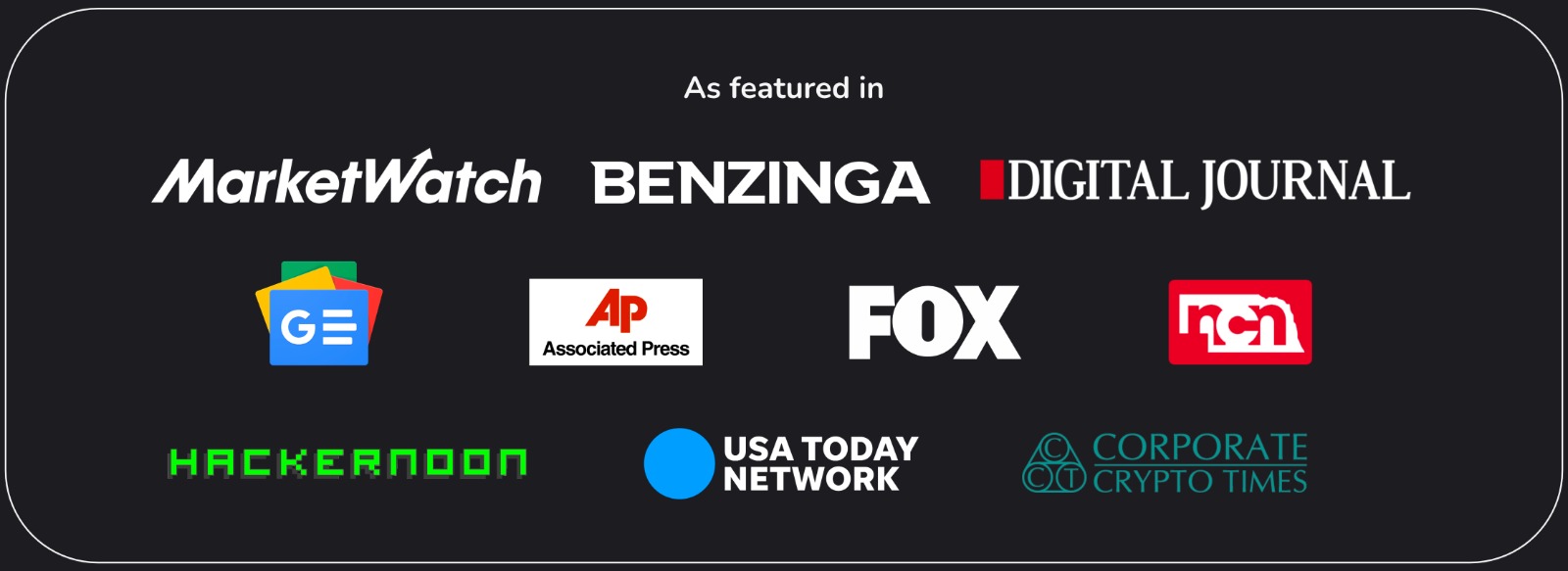| Keyword |
Definition |
| Alpha |
Term used to describe previously unknown information provided by someone in authority about a project, that gives the recipient a chance to act early.
|
| Bags |
Term used to described individuals crypto holdings.
|
| Bitcoin Maxi or Bitcoin Maximalist |
Crypto investor that only invests and advocates Bitcoin.
|
| Crypto Natives |
Those already interacting with blockchain-native platforms and services.
|
| Decentralized |
A system that has no single authority or administrator, and the opposite of a centralized government.
|
| Degen |
Short for ‘degenerate’, term used to describe someone that makes impulsive crypto purchases with little to no research. Investments usually based on high level news and trends. |
| Discord |
Communication application that has been adopted by Crypto, Defi and NFT projects to share updates and for their owners and communities to interact. |
| Diamond Hands |
Someone that buys and hold crypto assets and is able to avoid selling when there is a dip in the market or bad news regarding the project. |
| Doxxed or Doxxing |
Term used to reveal the identity of a once anonymous crypto project founder or investor.
|
| DYOR |
Acronym for ‘do your own research’, advice given to potential investors when looking into a defi or crypto project. |
| Floor or Floor Price |
The lowest price to purchase an NFT from a particular collection on the secondary market or the lowest priced NFTs on the market. |
| Floor Sweep |
To buy the lowest price NFTs of a particular collection on the open market. |
| FUD |
Acronym of ‘fear, uncertainty and doubt’, misinformation usually shared to cause panic selling and reducing the floor price. This is so the person sharing the information can purchase at a lower price. |
| Grinding |
Term used to describe the process of being active in multiple communities and on social media to gain free NFTs or whitelist spots for their forthcoming mints. |
| HODL |
Acronym for ‘hold on for dear life’ a term used to describe holding crypto assets even when everyone else around is selling them. |
| In Real Life (IRL) |
A term used to describe real world activities usually to compare to the digital world of say a Metaverse. |
| Key Opinion Leaders (KoLs) |
People of influence within the crypto sphere, usually provide paid promotion opportunities to improve sentiment of a particular project. |
| LFG |
Acronym of ‘Let’s f*****g Go’, term used when a community is enthusiastic about a piece of news shared by a project. |
| Meatspace/ Meatverse |
The physical or real world, as opposed to the virtual world (i.e. Metaverse). |
| Meta |
Something that is self-referring. |
| Metadata |
Data that refers to other data. |
| Metaverse |
A term coined in the novel Snocrash (combination of Meta and Universe) and is now used to describe virtual and expansive environments accessed through augmented reality, virtual reality, and internet infrastructure. |
| Moon |
A term used to describe if a project is going to or is doing well e.g. this project is going to the moon. |
| Newb or Newbie |
Someone that is to know to the ecosystem and therefore has little knowledge of the culture or history of the space. |
| NFA |
Acronym of ‘not financial advice’ a term used to avoid litigation for losses resulting from receiving inaccurate advice. |
| Non–crypto-native users |
Those who interact with decentralized applications for the first time with limited or no knowledge of the specific ecosystem. |
| Peer-to-peer |
When individuals interact directly with one another on a decentralized platform. |
| Paper Hands |
The opposite of diamond hands, a term used to describe someone that does not hold on to crypto assets, often selling early at a loss at the first sign of bad news or a dip in the market. |
| PFP or Profile Picture |
NFTs gave rise to ownership of images on the blockchain, one of the first use cases was to have your NFT as a profile picture on a social account, these were known as ‘pfps’. |
| Pump and Dump |
A project that uses media manipulation and false news to generate interest that leads to an increased price of a crypto asset and then once a price point has been achieved they exit the market (sell their assets) causing the price to crash leaving remaining holders with losses. |
| Questing |
The process of carrying out tasks and instructions (usually testing) on behalf of a project for small, usually digital rewards. |
| Rekt |
"Wrecked" - used to describe a drastic financial loss due to events such as assets losing value, wallet/platform getting hacked. |
| Rug or Rug pull |
A term used to describe theft in the cryptocurrency space, whereby project developers suddenly abandon a project after taking investors’ money. |
| Scammer or Scam Artist |
A term used to describe someone that uses fraudulent tactics to obtain digital assets from targeted individuals. |
| Wallet Drain |
A term used to describe the stealing of assets from an individual’s wallet. |
| Whale |
A term used to describe someone who owns a lot of a particular asset or is extremely wealthy. |
| Web 2.0 |
The state of the internet that reflects more user-generated content i.e. social media. |
| Web 3.0 |
The next evolution of the internet that provides a more decentralized method of user-content ownership. |
| Keyword |
Definition |
| Bitcoin |
The first peer-to-peer transaction protocol stored on a blockchain; developed and introduced by Satoshi Nakamoto. It is a type of decentralized digital currency traded on the Bitcoin platform. |
| Bitcoin Exchange Traded Fund (ETF) |
An investment fund on a standard exchange that tracks the price movement of Bitcoin. |
| Burning |
In cryptocurrency, the process of taking tokens out of circulation.
Crypto Asset – Used to describe cryptocurrencies/ utility and platform tokens, NFTs and other digital commodities. |
| Deflationary |
A deflationary cryptocurrency is a form of cryptocurrency with a depreciating supply of coins.
Distributed Ledgers - Technology that uses multiple independent computers to store information and transactions, rather than a single centralized database. |
| ERC-20 Token |
A token that creators produce as indistinguishable tokens to trade for other tokens. |
| ERC-721 Token |
A token that creators to issue that each have a unique identifier code. |
| ERC-1155 Token |
A newer token that allows one smart contract to represent multiple fungible and non-fungible tokens in addition to batched operations. |
| ETH or Ether |
Tokens used for payment on the Ethereum network. |
| Ethereum |
Ethereum is a blockchain network that is similar to Bitcoin. It has its own cryptocurrency, called Ether or ETH, and can be used to build, publish and monetize decentralized digital applications. |
| Gas |
A fee paid by users to execute transactions on the Ethereum network based on the efforts by miners, needed to carry out specific transactions on the Ethereum network.
Governance token or Utility Token - A token created by a decentralized exchange that enables holders to vote on proposals made by the community. |
| Halving |
In relation to cryptocurrency, this is the reduction of the block rewards provided to miners by half. It is a process that ensures the issuance rate of new coins is steady until it reaches maximum. E.g. “Bitcoin halving” every four years. |
| Impermanent loss |
A loss of funds caused when the ratio of tokens in a liquidity pool becomes uneven. |
| Inflationary |
Inflationary cryptocurrencies are those with an ever-increasing circulation number. E.g. Dogecoin. |
| Liquidity |
How easy an asset can be bought or sold without affecting its price. |
| Liquidity Mining or Yield Farming |
The act of providing liquidity to enable trading of cryptocurrencies on decentralized platforms. |
| Liquidity Pool |
A pool of tokens locked in a smart contract to provide liquidity in decentralized exchanges to help trading. |
| Minting |
In cryptocurrency, the process of creating new tokens, popularized by the generation of NFTs. |
| Non-fungible token (NFT) or Digitally Native Asset |
A digital token that represents ownership of a unique item, such as digital artwork, music, or game asset.
This token cannot be interchanged with something else. |
| Opensea |
Secondary market place for NFTs. |
| Pegging |
When a digital currency is tied to another currency to control or stabilize it.
For example, stablecoins are typically pegged to a commodity or fiat currency. |
| Pre-sale |
The process of making a cryptocurrency or NFT available for sale to early adopters prior to making it available to the public. |
| Public Mint |
Sale of digital assets to general public (post-whitelist or pre-sale access). |
| Security Tokens |
Tokenized assets issued under a regulatory framework that designates the tokens as registered securities, similar to stocks or bonds. |
| Simple Agreement for Future Tokens (SAFT) |
An agreement for an investor to collect utility tokens at a reduced price at a future date when the system that is in its infancy is up and running. |
| Staked Tokens |
The native token a validator puts up to guarantee the legitimacy of a transaction that they have just added to the blockchain. |
| Staking |
The process of committing and holding funds in a certain cryptocurrency for the purpose of earning rewards and contributing to the security and stability of a network/ ecosystem. |
| Stablecoin |
A type of crypto asset that is held relatively stable (balanced) via algorithm in a smart contract e.g. USDC or Ampleforth (AMPL).
The algorithm or collateralized asset movement dictates the amount of currency to create or burn dependent on the current supply. |
| Token Generating Event TGE |
Term used to describe the point at which a new token is created and distributed. |
| Token |
A fungible virtual currency that functions as a tradable asset, or a utility that resides on a specific cryptocurrency’s blockchain. |
| Tokenomics |
The study of the economics of crypto tokens, including how they work, their distribution, and what makes them attractive to investors. |
| Tokenomic Document |
Document used to describe the economics (distribution/ burn mechanisms) for a particular crypto token. |
| Utility token |
A token created by a decentralized exchange that enables holders to vote on governance decisions and take part in community ecosystems. |
| Vesting |
Is a time release for crypto tokens based within a smart contract that ensures that someone doesn’t immediately sell their allocation (dump) and cause increased sell pressure on the token. |
| Wallet |
A digital cryptocurrency storage device that is either virtual or physical. Can be ‘hot’; assets stored online or ‘cold’ asset private keys stored offline via hardware. |
| Wallet address |
A digital address made up of alphanumeric characters that is used to identify a digital wallet. |
| Whitelist |
A list created of early adopters and supporters that can gain access to pre-sale opportunities to buy cryptocurrency or mint NFTs. |
| Keyword |
Definition |
| Altcoins or Sh*tcoins |
Any digital token or cryptocurrency that is not Bitcoin as described by a Bitcoin Maxi. |
| APR (Annual Percentage Rate) |
When interacting with a lending platform, this is the yearly rate of interest earned on assets lent, or paid on assets borrowed. |
| APY (Annual Percentage Yield) |
Similar to APR (Annual Percentage Rate), but also takes compounding interest into account to give the effective annual percentage rate. |
| Asset class |
A group of investments with similar characteristics. |
| Atomic Swaps |
Automated technology that allows the exchange of one cryptocurrency for another across different types of blockchains without using a centralized body. |
| Automated Market Maker (AMM) |
An automated trading system that underlies decentralized exchanges, using smart contracts to facilitate trades without a centralized exchange. |
| Bear Market |
A description of a market where investors are acting fearfully, selling assets and causing a downward trend of asset prices. |
| Bull Market |
A description of a market where investors have confidence and buy assets, this causes an upward trend of asset prices. |
| Bull Trap |
Towards the middle of a bear market, where sentiment (and prices increases) only to fall to new lows, ‘trapping’ bullish investors into holding or selling at a loss. |
| Central Bank Digital Currency (CBDC) |
A cryptocurrency established by a government or central bank. |
| Centralized Exchange (CEX) |
A trusted third-party online platform that enables the buying and selling of cryptocurrencies, both for fiat or digital currencies. |
| Decentralized Exchange (DEX) |
A peer-to-peer marketplace that allows individuals to buy and sell cryptocurrencies to one another, without an intermediary. |
| Decentralized Finance (DeFi) |
A category of financial services, such as borrowing and lending, that operate via applications on decentralized public blockchain networks. |
| Exchange-Traded Fund (ETF) |
A structured asset or grouping of assets (securities, funds, commodities) traded, as if it were traded on a stock on an exchange. |
| Fiat currency |
A government-issued currency that is not backed by a commodity, like oil or gold, but rather by the issuing government itself. E.g. US Dollar. |
| Fund of Funds |
A central crypto fund that invests in other crypto funds, in order to spread risk and increase stability of the funded network. |
| Initial Coin Offering (ICO) |
Similar to an IPO (Initial Public Offering), an ICO raises funds for a new coin, product, or project in the crypto sphere. They can be held either publicly or privately. |
| Initial DEX offering (IDO) |
A decentralized crowdfunding platform in the Defi space, that uses liquidity pools to enable traders to buy and sell tokens. Gives immediate funding opportunities for startup companies. |
| Initial Exchange Offering (IEO) |
Similar to an ICO (Initial Coin Offering), this is a fundraising event that is run and managed by a cryptocurrency exchange platform. |
| Market Capitalization |
The number of currencies and their coins in circulation multiplied by their current prices; often abbreviated as “market cap”. |
| Market Maker |
A firm or individual who buys and sells securities for its own account, thereby creating liquidity in the market. |
| Micropayment |
An online financial transaction involving a small amount of money. |
| Store of Value or Store of Wealth |
An asset or commodity that retains its value relative to other assets or currencies over time. |
| Keyword |
Definition |
| Anti-money laundering (AML) |
Legislation that attempts to discourage fraudulent activities primarily money laundering. |
| Crypto Custody |
Refers to the ability to move, store, and protect crypto assets. Investors can maintain direct custody of digital assets, or indirect via a trusted third party. |
| Double-Spending |
A type of fraud where a crypto holder tries to spend the same coin twice. Blockchain technology prevents this. |
| Encryption |
A means of protecting digital information by which text is scrambled into secret code. An algorithm and a password or private key are needed to decrypt the information. |
| Hack |
Term used to describe gaining illicit access to a computer or network, usually with malicious intent. Attackers look for vulnerabilities in blockchain networks and smart contracts to exploit them for illegal gain. |
| Know Your Customer/Client (KYC) |
A protocol designed to protect consumers and financial institutions by ensuring that businesses have verified the identity of their clients and their propensity for risk. |
| Ponzi Scheme |
A type of fraud centered around a business that is created to lure unsuspecting investors into participating in the business with the promise of some form of financial return. The premise usually involves some form of pyramid scheme where new entrants fund existing members’ returns. |
| Private Key |
The secret access to encrypted digital information that is paired with a public key. |
| Public key |
A cryptographic method to encrypt digital information and share with another party to access private encrypted information. |
| Seed Phrase or Recovery Phrase |
A unique set of words provided when creating a digital wallet. Each seed phrase is unique and is essentially the key to the owners digital assets. |
| Self-custody wallet |
A wallet for storing crypto assets and managing DeFi transactions involving these assets. Unlike hosted wallet, the owner/user maintains complete control over the private keys needed to access the wallet. |
| The Howey Test |
A test based on the US Supreme Court case SEC v. W.J. Howey Co., which determines whether a transaction, scheme, or contract qualifies as an “investment contract” and thus deemed to be a security by the SEC. |
| Tokenization |
Tokenization is the process of substituting a sensitive data element with a non-sensitive/ less valuable equivalent, referred to as a token. |
| Trustless |
The blockchain platform does not require participants to know or trust each other, and it does not require a third-party intermediary in order to function. |
| Keyword |
Definition |
| API |
Acronym of ‘Application Programming Interface’, in other words a way of accessing ‘back end’ data via software or system. |
| Application Layer |
The application layer is where different applications can communicate with each other. |
| Block Explorer |
A website that provides access to all transactions on a particular blockchain platform using a public key. E.g. Etherscan. |
| Bug Bounty |
A program that provides rewards to individuals who test software platforms and identify errors (bugs) and other vulnerabilities. |
| Cross-Chain Functionality or Blockchain Interoperability |
The ability of one blockchain to communicate with another blockchain and perform tasks that are usually bound to the same network. |
| Decentralized App (dApp) |
Applications run on certain protocols that consumers can use. E.g. Dimitra. |
| Decentralized Platform |
A system that has no single authority or administrator and no single, centralized storage of data or element of coordination or governance. |
| Digital Asset |
A digital file that is owned by and provides values to an individual or business. |
| EVM (Ethereum Virtual Machine) |
The driving force behind the functionality of the Ethereum blockchain. Enables execution of smart contract transactions. |
| Fork (hard or soft) |
An upgrade to a network protocol, either through a hard fork, which preserves the past transactions as they are or through a soft fork, which is compatible with both historical and future transactions. |
| Fungible |
A commodity that can easily be replaced with another of the same type. Most fiat currencies are fungible since each unit of the currency is worth an identical amount. |
| Hard Fork |
A permanent split in the blockchain platform in order to change the code. |
| Interoperability |
The ability of different systems (both hardware and software) to connect and share resources via a common format, without restrictions. |
| Layer 2 Solution |
Designed to increase speed or functionality for an existing Layer 1 network, Layer 2 solutions sit on top of the original network to address scalability issues. E.g. Bitcoin’s Lightning Network. |
| Non-Fungible |
An item that is not exchangeable with other items due to their unique properties, such as a car or a work of art. |
| Open-Source |
Computer software that is available for anyone to use, change, or distribute the software and its code. |
| Oracle |
A service that enables one-way transmission of external data to a blockchain. That data can then be used to trigger a smart contract. |
| Soft Fork |
A change to the software protocol wherein previous blocks are made invalid. |
| Software Development Kit (SDK) |
A package of software development tools, including documentation, frameworks, and guides, to help developers build platform-specific applications. |
| User interface (UI) |
The configuration of software, hardware, and input devices that allow a user to interact with a computer. Essentially, a portal to use complex technology in a user friendly application. |
| User Experience (UX) |
The term used to describe the improvements of an application or technology using the end user’s journey to solve a problem or carry out an action. |



